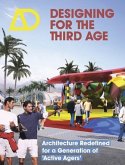The announcement of Rio de Janeiro as the 2016 Olympic host city has placed Latin America on the world's stage. Now, for the first time since the mid-20th century when Modernist urban design was undertaken on an epic scale, Latin America is the centre of international attention and architectural pilgrimage. The mass migrations from the countryside and the erection of informal settlements in the late 20th century left cities socially and spatially divided. As a response, in recent decades resourceful governments and practices have developed innovative approaches to urban design and development that are less to do with utopian and totalitarian schemes and more to do with urban acupuncture, working within, rather than opposing, informality to stitch together disparate parts of the city. Once a blind spot in cities' representation, informality is now considered an asset to be understood and incorporated. Today, more than 50 per cent of the world s population live in cities for the first time in human history, and an increasing amount in slums. As a result of globalisation, Latin America is now once again set to go through major change. The solutions presented in this issue represent the vanguard in mitigating strong social and spatial divisions in cities across the globe.
Contributors include: Saskia Sassen, Hernando de Soto, Ricky Burdett and the former mayor of Bogotá, Enrique Peñalosa.
Featured architects: Teddy Cruz, Urban-Think Tank, Jorge Jáuregui, Alejandro Echeverri, MMBB and Alejandro Aravena.
Covers large-scale urban case studies, such as the revitalisation of Bogotá and Medellín.
Guest-editor Mariana Leguía
The announcement of Rio de Janeiro as the 2016 Olympic host city has placed Latin America on the world's stage. Latin America has not been the centre of international architectural attention and pilgrimage since the mid 20th century when economic growth triggered the development of Modernist urban design and architecture on an epic scale. Since then the centralised, utopian planned model has broken down. Mass migrations from the countryside and erection of informal settlements have left cities socially and spatially divided. Within this context and in the mist of globalization Latin America is set to go though major change once again.
In recent decades, resourceful governments and practices have developed innovative approaches to urban design and development, less to do with the utopian and totalitarian schemes and more to do with "urban acupuncture", working within rather than denying the framework of informality to stitch together disparate parts of the city.
This title of AD will explore the current urban issues faced by Latin American cities and the response of alternative local practitioners at different scales. Large-scale urban case studies, such as the revitalisation of Bogotá and Medellin, will be featured alongside architectural practices, research-based organisations and university studios working at a grass-roots level.
Contributors include: Saskia Sassen, Hernando de Soto, Ricky Burdett and Bogotá ex-mayor Enrique Peñalosa.
Featured architects: Teddy Cruz, UTT-Urban Think-Tank, Jorge Jauregui, Alejandro Echeverri, MMBB and Alejandro Aravena.
Hinweis: Dieser Artikel kann nur an eine deutsche Lieferadresse ausgeliefert werden.
Contributors include: Saskia Sassen, Hernando de Soto, Ricky Burdett and the former mayor of Bogotá, Enrique Peñalosa.
Featured architects: Teddy Cruz, Urban-Think Tank, Jorge Jáuregui, Alejandro Echeverri, MMBB and Alejandro Aravena.
Covers large-scale urban case studies, such as the revitalisation of Bogotá and Medellín.
Guest-editor Mariana Leguía
The announcement of Rio de Janeiro as the 2016 Olympic host city has placed Latin America on the world's stage. Latin America has not been the centre of international architectural attention and pilgrimage since the mid 20th century when economic growth triggered the development of Modernist urban design and architecture on an epic scale. Since then the centralised, utopian planned model has broken down. Mass migrations from the countryside and erection of informal settlements have left cities socially and spatially divided. Within this context and in the mist of globalization Latin America is set to go though major change once again.
In recent decades, resourceful governments and practices have developed innovative approaches to urban design and development, less to do with the utopian and totalitarian schemes and more to do with "urban acupuncture", working within rather than denying the framework of informality to stitch together disparate parts of the city.
This title of AD will explore the current urban issues faced by Latin American cities and the response of alternative local practitioners at different scales. Large-scale urban case studies, such as the revitalisation of Bogotá and Medellin, will be featured alongside architectural practices, research-based organisations and university studios working at a grass-roots level.
Contributors include: Saskia Sassen, Hernando de Soto, Ricky Burdett and Bogotá ex-mayor Enrique Peñalosa.
Featured architects: Teddy Cruz, UTT-Urban Think-Tank, Jorge Jauregui, Alejandro Echeverri, MMBB and Alejandro Aravena.
Hinweis: Dieser Artikel kann nur an eine deutsche Lieferadresse ausgeliefert werden.








